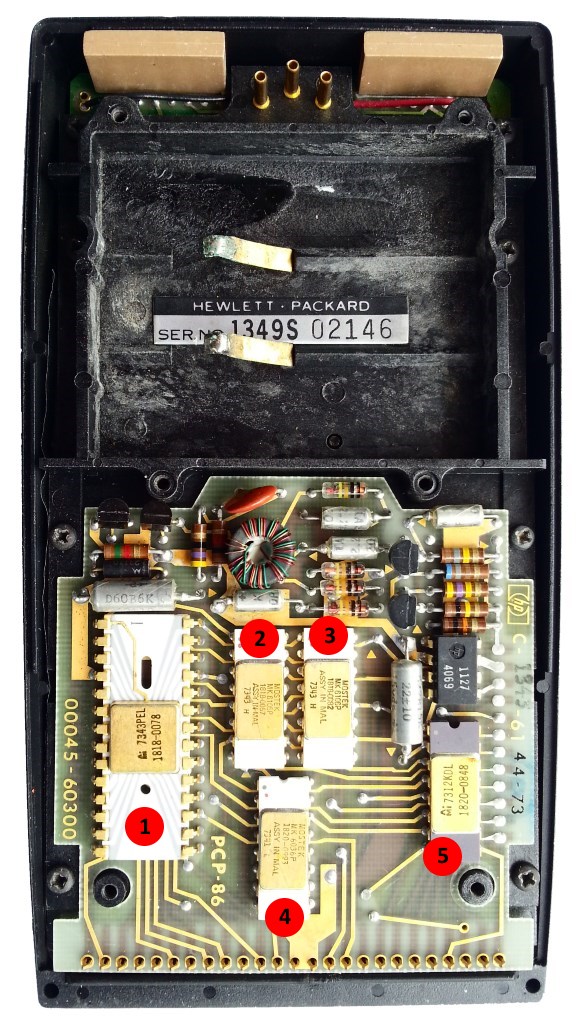| HP codename, series |
Wizard, Classic |
| Type, Precision, Input Mode |
Scientific, 10 BCD digits, exponent ±99,
Reverse Polish Notation |
| Programmable |
No |
| Memory |
No permanent memory. Registers 1-9. |
| Display |
13 digit 7 segment red LED plus sign |
| Special features |
Earlier HP-45 models have code to implement a
timer.
This was never exposed as a user feature because the lack of a quartz
crystal made the timer fairly inaccurate. Pressing RCL and then
pressing CHS 7 8 all at the same time invokes the timer mode
with the value of X as the starting time. Once in timer mode, the
following commands are available:
- CHS toggles it between running and stopped.
- SUM+ stops the
timer.
- CLx resets the timer to zero both in stopped and
running mode.
- EEX turnes on/off the 1/100th second display.
- 1 - 9 stores the current time in that register
when the timer was running or recalles the stored time when the timer
was stopped.
- The decimal point key brings the calculator back
to normal mode with the time still in the display.
- Enter also resumes normal mode but cleares the
display.
It's possible to add a crystal to the HP-45. The timer software was
later used in the HP-55.
|
| Original Pricing, Production |
1.5.1973 ($395) - 15.1.1976 ($195) |
| Batteries |
3x AA pack. Calculator works with power supply
and no battery pack installed |
| Dimensions |
Length 15.1cm, Width 8cm, Height 3.6cm |
| Links |
HP-45 Owner's Handbook,
Nov 1974 (PDF)
HP-45 Applications Book, Dec 1974
(PDF)
HP-45 Bedienungs-Handbuch, October
1973 (PDF, German)
HP-45 Kurzanleitung (PDF, German)
Quick Reference (PDF)
Comparisn sheet
with
Corvus 500 (JPG) |
| Comment |
HP's third calculator.
Corvus tried to rival it with their Corvus 500 calculator. It was certainly cheaper and offered more functions (see also the Comarisn Seet)
The handbook tells the story about Henry Stafford who in his mind
squared
the number 365365365365365365 - something that reportedly even "today"
(in
1974) no calculating machine can do. In 2004 this is of course quite
different:
An HP-49g+ in exact mode can easily perform this calculation and
thereby
prove that the result given in the German manual is wrong! But even an
HP-45 is
sufficient to see this immediately: Simply multiply 365*365=133225 and
compare
this to the number 133...255 given in the manual to see that the
2nd to last digit is wrong. This by the way is the only incorrect
digit. And the English manual is correct in all digits.
|
